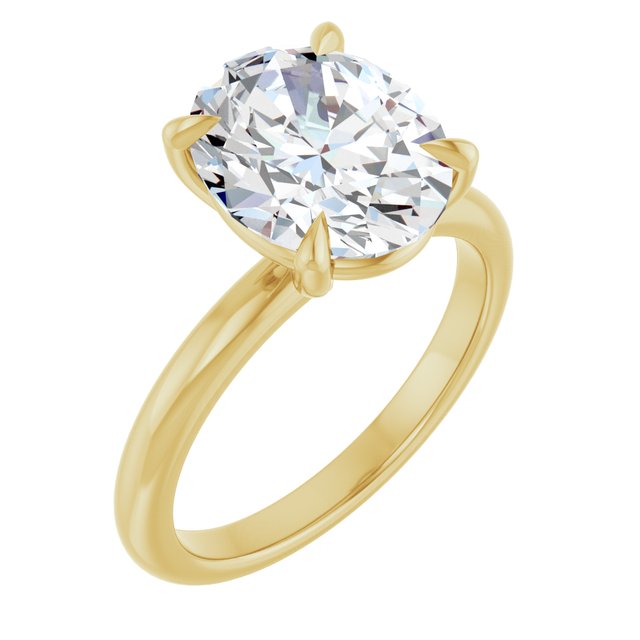- Diamond is more durable than moissanite.
- Moissanite is less expensive than diamond.
- Most moissanites are lab-grown.
- Moissanite has more sparkle than diamond.
If you have been around jewelry for the past few years, you’ve probably heard of moissanite, a colorless durable gem that can be set in everything from stud earrings to engagement rings. But how does it compare to a diamond? Between diamond and moissanite, which is the best one for you?
Composition
Some people call moissanite a “fake diamond” or say it’s the same as a lab diamond, but that's not accurate. While moissanite looks nearly identical to both lab and natural diamonds alike, it is a completely different gem. While diamond is made of carbon, moissanite is made of silicon carbide. This small detail means no matter how similar they look and act, they are two different materials.


Hardness
One of the biggest reasons diamonds are often used in engagement rings is their hardness. The hardness of a gem is defined by how resistant it is to being scratched. If you are going to wear a ring all day, every day, you want the stone to be able to keep up with you. When compared, moissanite is only slightly less hard than diamond, which is pretty good! Moissanite beats out sapphire and ruby, both of which can be found in engagement rings. As far as hardness goes, moissanite is a great candidate for an engagement ring.
Appearance
To the untrained eye, moissanite and diamond are identical. However, if you stare at them for a while, you might start to notice moissanite’s biggest tell that it isn't a diamond—the sparkle. Fun fact: moissanite is considered the most sparkly gem in the world. Because of the stone’s ability to reflect light, it sparkles more than diamond.
Those who are experienced with diamonds may know the term "inclusions." It refers to imperfections created during the gem's growth process, either lab or natural. Inclusions can be found in both diamond and moissanite. Diamond tends to have more inclusions than moissanite, and the ones that moissanite has are only noticeable under a microscope.
Value
Out of everything else we have covered, moissanites differ most from diamonds in their value. Even the smallest diamonds can cost a few hundred dollars, and some of the most exceptional diamonds can go for hundreds of thousands, while moissanite is far less than half the cost of an average diamond. This huge difference can be boiled down to one major factor: Moissanites are man-made.
To clarify, not all moissanites are man-made. Moissanite can rarely be found in nature; however, almost all moissanites on the market are lab-grown. You may be asking how lab diamond prices compare to moissanite since they are both grown in a lab. Moissanite is still much less expensive than lab diamonds for two reasons: diamonds have a higher demand and value, and the process for moissanite growth is less expensive than for lab diamonds.
Final Thoughts
No matter which one you pick, you will end up with a brilliant and durable stone, so is there really a wrong answer? If you are buying for someone else, try to ask family and friends which one the recipient would prefer. Most people have a preference out of the two. If you have any questions or need help picking out your next piece of jewelry, remember that the Lola Ade team is only an email away!


